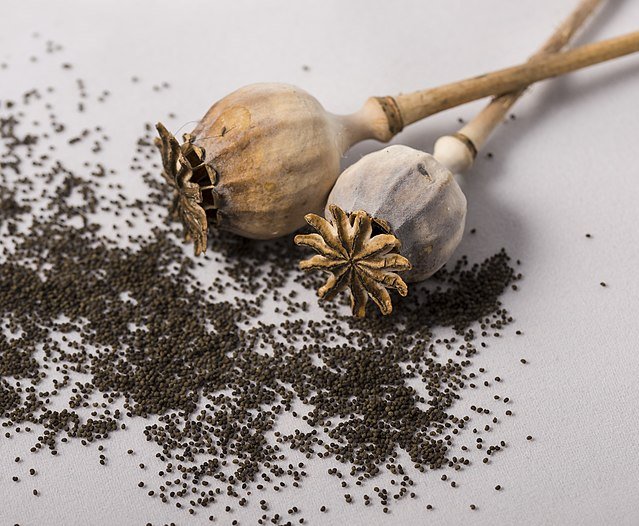Algorithms Now Determine If You Get Medication
/By Crystal Lindell, PNN Columnist
Did you know that secret algorithms are being used to determine whether your pharmacy is allowed to stock certain medications?
Algorithms are computer software programs designed to select, calculate and carry out certain actions – in this case the amount of opioids and other controlled substances that pharmacies can keep in stock to fill prescriptions with. And if an algorithm decides your pharmacy has used up its monthly allotment of a controlled drug, there’s almost no recourse for you as a patient.
The situation was recently brought into the spotlight by The New York Times article, “Opioid Settlement Hinders Patients’ Access to a Wide Array of Drugs.”
As The Times explains, the $21-billion opioid settlement brokered between the three largest U.S. drug distributors and 46 states includes a provision that forces the distributors to place strict limits on the drugs they supply to pharmacies. In addition to opioids, any medication labeled as a controlled substance is now subject to these restrictions, including Xanax, Adderall, muscle relaxants, and more.
“Before the settlement, pharmacists said, they could explain to a distributor the reason for a surge in demand and still receive medications past their limits. Now the caps appear to be more rigid: Drugs are cut off with no advance notice or rapid recourse. As a condition of the settlement, distributors cannot tell pharmacies what the thresholds are,” The Times reported.
So, like I said, secret algorithms are effectively deciding your medical treatment. And it’s not even based on you as an individual. It’s based on how many people in your region are taking the same medication.
Predictably, the situation is causing a lot of problems for a lot of people. The Times found that a number of groups have been affected, including:
“College students far from home trying to fill their Adderall prescription.”
“Patients in rural areas where it is customary to drive long distances for medical care.”
“Hospice providers that rely on local pharmacies for controlled substances.”
Let’s take a moment to truly absorb that last one. While the The Times used the term “hospice providers,” we all know what that actually means: hospice patients who are very sick or terminally ill.
So, it doesn’t even matter if you’re on your deathbed, you still might not get pain relief. And the decision for denial, to paraphrase how a pharmacist might explain it, is basically: “A bunch of your neighbors already got morphine, so you can’t have it.”
While the exact metrics used to deny shipments aren’t public, the drug distributors have addressed the issue on their websites, and explained how they’re tracking prescriptions.
“The algorithm will flag order lines of unusual size, frequency or pattern based on a pharmacy’s own order history or when compared to peers,” AmerisourceBergen explains. “Any order lines that are flagged by the algorithm will be automatically cancelled and reported.”
Again, none of that is based on what any specific patient is experiencing.
All of this would be upsetting if it were only impacting opioid medication, but the fact that it’s been extended to other common prescriptions – that weren’t even part of opioid litigation -- is both enraging and scary.
Doctors do not give prescriptions for any controlled substances out easily, so if a patient is being prescribed any of the meds, then they need them.
Now, you may assume that at the very least, pharmacies are calling doctors once they hit these new thresholds so that the doctor can at least try to prescribe something else or send the prescription to another pharmacy.
You’d be wrong.
As the The Times reports:
“Psychiatrists in California were so alarmed by patients’ stories of unfilled prescriptions that they sent a survey to colleagues in December. They received reports of dozens of such problems, said Dr. Emily Wood, chairwoman of the government affairs committee of the California State Association of Psychiatrists.
Dr. Wood said that patients who take a stimulant for A.D.H.D. sometimes need anti-anxiety pills or a sedative at night to sleep — but that pharmacists now tell them they cannot have the combination.
“Pharmacists aren’t calling the doctors to work it out,” Dr. Wood said. “They’re just not filling the prescriptions.”
Pharmacists are being put in an impossible position, being forced to essentially serve as police agents without any say in what they’re enforcing. And it’s upsetting that the task of reaching a doctor to ask for a different prescription is now falling on patients with conditions like ADHD, a disorder that makes tasks like that especially difficult.
I couldn’t find much about how these algorithms were created, so it’s unclear if doctors were involved in creating them. But one thing we do know is that your personal doctor definitely wasn’t involved. And your personal needs were not a factor.
Your medical treatment is now being determined by drug distributors, state attorneys general, lawyers and computers — none of whom have ever met you or your doctor.
The thing that most people in the United States don’t seem to understand — but may be about to learn — is that to the DEA anyone who uses a controlled substance above a certain level must be abusing them. This is evidenced by the fact that this policy is even leading to restrictions for hospice patients and none of the parties involved are trying to fix that.
As the The Times reports, “Although the tighter restrictions have been in place for months, the government has offered little remedy for patients.”
It’s easy to believe the myth that restrictions on controlled substances are there to help keep us safe. That they are only meant to keep these medications from people who might misuse or abuse them. But how is it safe to make a patient quit Adderall cold turkey, even when they have a valid prescription for it? How is it safe to tell rural patients that they need to drive hundreds of miles to another pharmacy? How is it safe to deny pain relief to a dying cancer patient? It’s not.
Everything about this situation is so inhumane. We’ve had incredible medical breakthroughs and finally have medications available for health conditions once considered untreatable. But it doesn’t matter. The masses still can’t have them. We must continue to suffer for whatever time we have left.
And for what? What is the reward for our suffering? Apparently, just more suffering.
Crystal Lindell is a freelance writer who lives in Illinois. After five years of unexplained rib pain, Crystal was finally diagnosed with hypermobile Ehlers-Danlos syndrome. She and her fiancé have 3 cats: Princess Dee, Basil, and Goose. She enjoys the Marvel Cinematic Universe, Taylor Swift Easter eggs, and playing the daily word game Semantle.








